The following tables show standard dimensions for keys and their grooves.
Search in blog
Blog categories
Latest posts
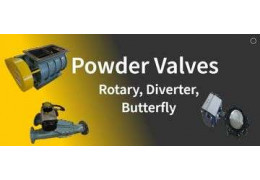
Motor Direction
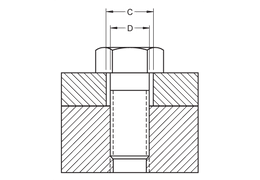
Clearance hole chart for inch bolts and screws according to ASME B18.2.8

One of the earliest forms of comparison. The pigment/binder ratio is the weight ratio of the sum of the pigments...
Popular posts




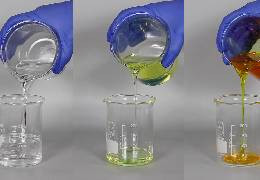
Featured posts
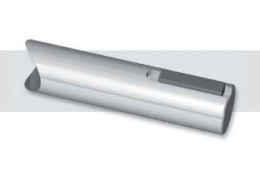




Blog tags
Photo gallery
No featured images
Archived posts
Top authors
DISPERSER CONFIGURATION
DISPERSER CONFIGURATION
The design of a dispersion system begins by defining the batch size and product characteristics. From there we can begin to determine blade size, types, and number which will then allow us to define shaft rpm and horsepower requirements.
Dispersion Rules of Thumb
In its simplest form we can follow these rules of thumb in defining a dispersing systems utilizing a single dispersion blade. These recommendations are listed below:
- Blade Type – A Sawtooth disperser blade, F Blade, is the initial choice for dispersion configurations.
- Tip Speed – The blade tip speed is targeted at 5000-5200 fpm (feet per minute).
- Blade Diameter – The disperser blade diameter should be approximately 1/3rd the diameter of the vessel.
- Blade Location – The blade should be located in the center of the tank
- Blade Position – Position blade 1/2 blade diameter off the tank bottom
- Liquid Level – The liquid level should be 1-1/2 blade diameters above the blade
- Freeboard – Sufficient headroom should be allowed for product vortexing to prevent material from splashing over the top of the tank. 20% freeboard is recommended.
- Disperser Power – The typical power requirements are in the range of 10 HP per 100 gallons of product.
Changes and Exceptions
While these “Rules of Thumb” present a very good tool in designing your preliminary dispersion system, there are very good reasons to depart from this configuration.
Dispersion Blade Selection
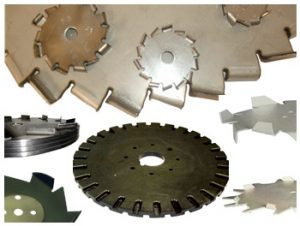
The sawtooth or “F” Style Blade is the workhorse in the industry. These dispersion blades provide a high level of shear with reasonable flow for most dispersion operations. They are a cost-effective solution as the can be formed from a single piece of stainless. The sawtooth disperser blade can operate in a wide viscosity range.
For increased viscosity, a higher profile blade may be preferred. The larger teeth produce more pumping than the typical sawtooth blade but at a cost of reduced shear. Our "G" Blade is a good example of this.
For improved dispersions, a Ring Blade or CSI blade can move the dispersion further on the Hegman Scale. These blades carry a higher price as they are fabricated from multiple pieces and assembled into their final form. They also have a limited viscosity operating range.
Tip Speed
We generally design a disperser’s tip speed for 5200 feet per minute. Depending on pigment characteristics, adjustments can be made in the field. Easier grinding pigments can be run at lower tip speeds. Tougher products may benefit from higher tip speeds. Certain blade styles operate better above or below the 5200 fpm mark. Temperature-sensitive products can be run outside the range; lower to run longer or faster to achieve grind quicker with less heat build-up.
For high viscosity products such as caulks and adhesives, it is typical to run at tip speeds around 4200 fpm.
Disperser Geometry Considerations
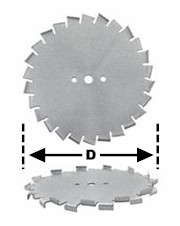
Blade Diameter
Blade diameter should be roughly 1/3rd the diameter of the vessel for a reasonably good dispersion in many dispersion operations. Most, but NOT All. The problem is every product is different. Viscosity, rheology, pigment, properties, etc. all play important roles in dispersion. These properties are not as easily modified as is blade diameter.
Viscosity and/or rheology may effect blade diameter choices. For products that are water-thin material may over vortexes, cavitates, or splashes from the tank. For extremely viscous products, insufficient flow may occur allowing the formation of dead zones and making a homogenous dispersion impossible. When these issues cannot be overcome with changes in dispersion blade selection blade diameter can compensate for the issues. Dropping to a smaller diameter dispersion blade can still deliver the required shear while reducing the vortex depth. For the high viscosity products, a larger bade may be more efficient at establishing flow at the outer edges of the tank eliminating stagnant areas and dead-spots.
So why not start with as large a blade as possible. First, power plays a big role. We will discuss that later. Also, as dispersion is a radial flow process, there are two distinct flow patterns that arise. One flow pattern occurs below the blade, the other above the blade. We count on the area outside the periphery of the blade to allow the exchange of material between these zones. If the disperser blade is too large this exchange is greatly hampered and it is difficult to get a homogenous mix.
Blade Location
The disperser blade should be centrally located in the tank. While this too is largely correct, there is a case for offset blade location. A centrally located disperser blade provides the best surface motion and deepest vortex for pigment wetting. An offset location will allow higher energy consumption and quicker dispersions provided adequate flow is present to ensure a homogenous mix.
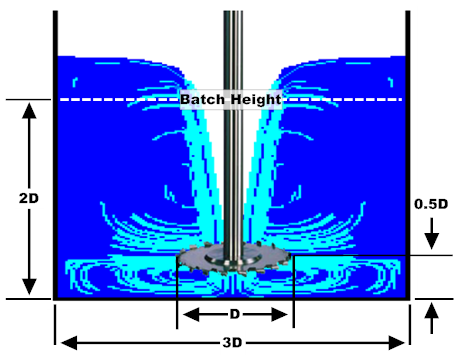
Blade Position
For Flat bottom tanks, the Dispersion Blade should be placed 1/2 diameter off the tank bottom. This is a very good location for the typical change-can disperser. When a high-speed disperser is used with portable tanks, these tanks usually have flat bottoms. Locating the blade 1/2 diameter off the bottom is usually close enough to affect the product immediately below the blade but not too close that flow is choked off.
But flat bottom tanks are not the only tanks used. Dish bottom tanks eliminate dead-spots at the interface between the tank wall and bottom. The curved bottom allows us to increase the distance from the bottom to 1 blade diameter. Viscosity also plays a role here with thinner products allowing larger distances. Cone bottom tanks present other challenges and deep cones are generally avoided.
For larger batches in fixed tanks, it can be advantageous to reduce the diameter and increase the tank height. This can afford the mixer a smaller footprint better utilizing the facility height. A second blade can be added to improve surface motion in the tank. Typically, horsepower demands are lower with this configuration than the short squat tank.
Liquid Level
Like blade diameter and location, the liquid level can be adjusted to compensate for vortex depth and surface motion. Higher liquid level can cut down on an overly aggressive vortex. Lower levels can allow for additional surface motion for better overall mixing.
Freeboard
Lower viscosity, deeper vortexes require additional headroom. Reduced surface motion can operate with less. A freeboard of 20% typically allows enough leeway for most mixers.

Power Requirements
Dispersers require 1 horsepower for every 10 gallons of product. While this is a reasonable estimate for most dispersions any changes made to blade diameter, tip speed can affect the horsepower draw. In addition, Horsepower is directly proportional to product density. Heavier products like zinc rich primers will draw in excess of the power predicted by these rules of thumb.
For dispersing horsepower estimates please see our disperser horsepower calculator.
Leave a comment
Related posts
 What to consider when moving to an Inverter
What to consider when moving to an Inverter
 Dual-Axis Centrifugal Mixer - A Better Mix
Dual-Axis Centrifugal Mixer - A Better Mix
 JACKETED TANKS AND THERMAL SHOCK
JACKETED TANKS AND THERMAL SHOCK
 Disperser Blade Mounting
Disperser Blade Mounting
 Tip Speed Definition and Formula
Tip Speed Definition and Formula


Latest comments